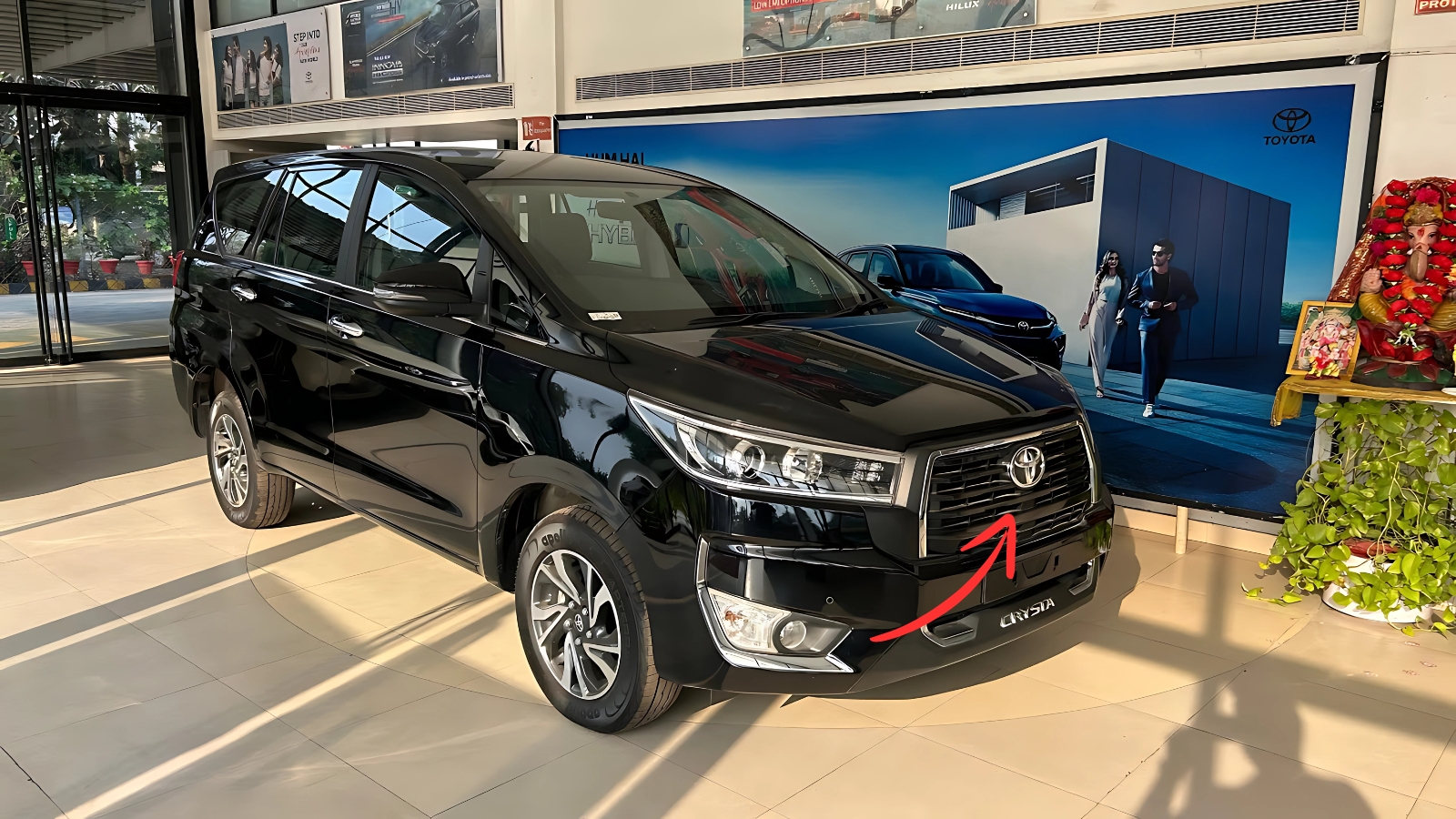Toyota Innova Crysta : Sometimes the most successful products create the biggest headaches for their manufacturers. The Toyota Innova Crysta embodies this paradox perfectly – a vehicle so dependable and well-regarded that discontinuing it seems impossible, yet so outdated that keeping it alive defies modern automotive logic.
Unexpected Reprieve: When Chip Shortages Become Lifelines
Nobody expected the global semiconductor crisis to rescue a supposedly obsolete MPV, yet that’s exactly what happened with the Crysta. Toyota’s original plan involved a clean transition from old to new, with the Hycross completely replacing its predecessor by early 2024. Reality, however, had different ideas.
Production bottlenecks for the feature-heavy Hycross variants forced Toyota’s hand. Instead of watching customers wait endlessly for their new MPVs, the company made a pragmatic choice – keep the simpler, chip-light Crysta rolling off production lines. This wasn’t sentiment; it was business necessity dressed up as customer service.
The strategy worked better than anyone anticipated. With over 60,000 combined orders pending across both Innova variants, demand clearly exists for Toyota’s dual-pronged approach. June 2025 numbers reinforced this reality, with 8,802 total Innova units sold, maintaining the nameplate’s position as India’s second-most-popular MPV.

Customer Segmentation: Reading Between the Lines
Toyota’s official messaging positions the Crysta for fleet buyers while targeting the Hycross at private customers. This neat categorization, while partly accurate, oversimplifies a more complex reality. Dealer interactions reveal significant private buyer interest in the Crysta, particularly among those who employ drivers or prioritize long-term ownership over flashy features.
These buyers understand something that specification sheets don’t capture – the Crysta’s singular focus on fundamental competence. The 2.4-liter diesel engine doesn’t win performance awards, but it delivers consistent power across hundreds of thousands of kilometers. The five-speed manual transmission lacks sophistication but never requires expensive repairs.
This demographic appreciates vehicles that prioritize function over form, reliability over technology. They’re not swayed by touchscreen sizes or ambient lighting options. Instead, they evaluate vehicles based on decade-long ownership costs and proven track records.
Engineering Philosophy: Simple Solutions for Complex Problems
The Crysta’s mechanical layout reflects old-school automotive thinking that modern buyers often misunderstand. The body-on-frame construction weighs more than monocoque alternatives and compromises on-road refinement, but provides unmatched durability for commercial applications.
The diesel powertrain produces 148 bhp and 343 Nm – figures that seem modest until you experience the engine’s incredible low-end torque delivery. Unlike turbocharged units that require specific rev ranges for optimal performance, this naturally aspirated design pulls strongly from idle upward, perfect for stop-and-go traffic or fully loaded highway cruising.
These engineering choices prioritize longevity over headlines. Fleet operators running multiple shifts understand this distinction immediately, while private buyers focused on weekend drives might find the compromises less appealing.
Market Position: Threading the Needle
The Crysta occupies an increasingly narrow market slice, positioned between budget MPVs that lack its refinement and premium alternatives that exceed its complexity. Pricing from ₹19.99 lakh to ₹27.08 lakh places it firmly in premium territory, yet feature content trails significantly behind similarly priced competitors.
This creates cognitive dissonance for many buyers. Why pay premium prices for basic features? The answer lies in understanding what the Crysta actually offers – not cutting-edge technology, but time-tested reliability that translates into lower total ownership costs over extended periods.
Commercial buyers grasp this immediately. Private buyers require more convincing, particularly younger demographics who prioritize connectivity and convenience features that the Crysta deliberately omits.
The Electric Future: Tradition Meets Innovation
The recent reveal of an electric Innova variant at the Indonesia Motor Show hints at possible evolution paths. With specifications including a 59.3kWh battery and 179 bhp electric motor producing 700 Nm of torque, this EV variant could bridge the gap between the Crysta’s utilitarian approach and modern expectations.
However, Indian launch timelines remain uncertain. Electric MPVs face unique challenges here, from charging infrastructure limitations to price sensitivity among commercial buyers who form the Crysta’s core constituency. The transition, if it happens, will likely prove gradual rather than revolutionary.
Legacy Management: When Success Becomes Burden
Toyota faces an unusual problem – managing the success of a product it originally intended to phase out. The Crysta’s continued strong performance, particularly in commercial segments, makes discontinuation economically questionable despite strategic preferences for the more modern Hycross.
This situation reflects broader industry challenges where established products with loyal followings resist easy replacement. The Crysta serves specific needs that newer alternatives, despite superior specifications, don’t address as effectively.
Toyota Innova Crysta Conclusion: Authenticity in an Artificial World
The Innova Crysta represents automotive authenticity in an era of increasing complexity. While competitors add features and technologies to justify higher prices, the Crysta maintains focus on fundamental competence – moving people and cargo reliably across vast distances.
Whether this philosophy survives modern market pressures remains unclear. For now, the Crysta continues serving customers who value substance over spectacle, proving that sometimes the simplest solutions remain the most effective ones.
